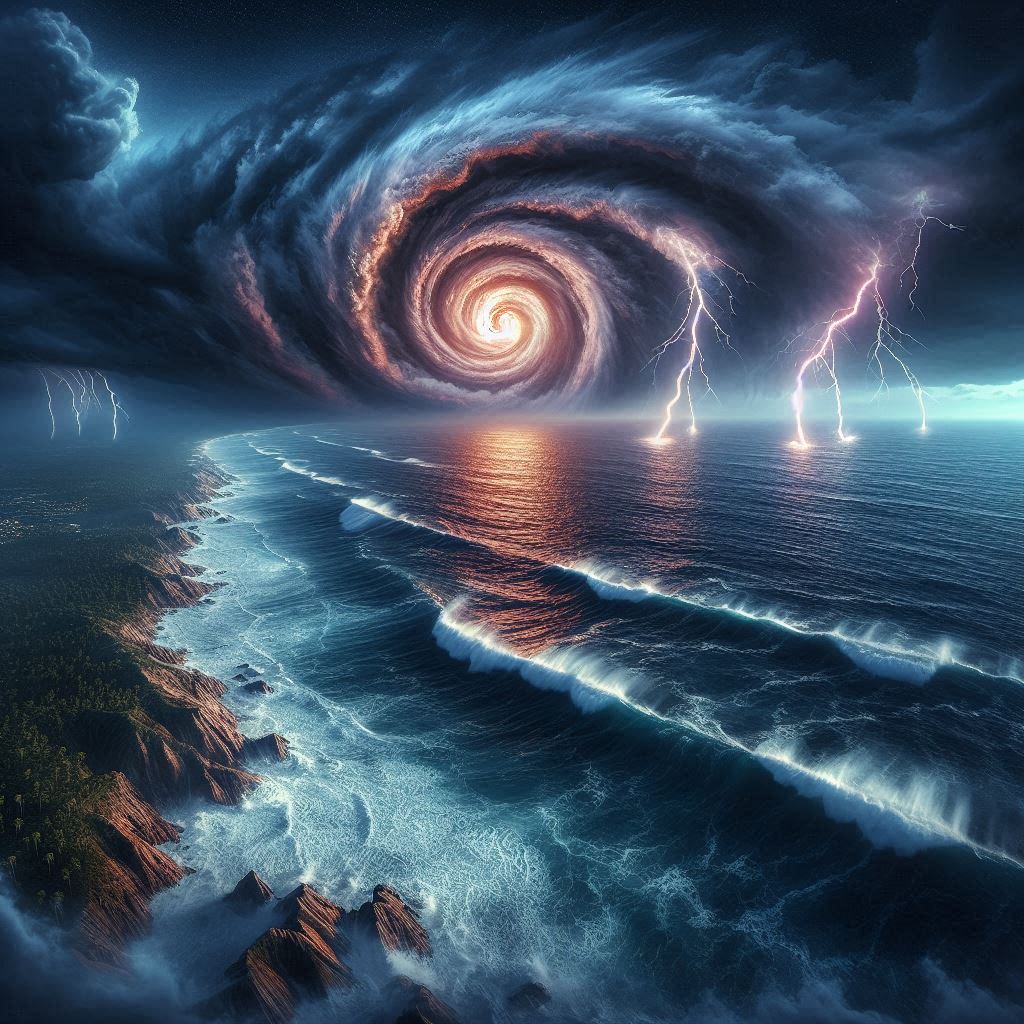- Empty cart.
- Continue Shopping
Hurricane Milton: The Monster Storm That Shook the World

In the annals of storm history, few can rival the sheer force and devastation unleashed by Hurricane Milton. Dubbed “The Beast of the Atlantic,” this monster storm rapidly escalated into a Category 5 hurricane, becoming a record-breaking force of nature. It’s not just Milton’s size and intensity that make it legendary, but the unique way it shocked meteorologists and citizens alike with its unpredictable path and the massive aftermath.
The Birth of a Beast
Hurricane Milton formed in the warm waters of the Caribbean, feeding off ocean temperatures at an unprecedented rate. Within just 72 hours, it jumped from a Category 2 to a high-end Category 5, boasting winds that reached a shocking 185 miles per hour, rivaling the strongest hurricanes ever recorded.
But it wasn’t just the winds that had everyone buzzing—it was Milton’s eye. At its peak, the storm’s eye measured nearly 50 miles across, one of the largest on record. Satellite imagery captured this eerie sight, showing a perfectly symmetrical “monster eye,” as some storm chasers called it.
An Unpredictable Path
Hurricane Milton was not your average hurricane. Most storms move on predictable courses, giving forecasters and residents a sense of where to prepare, but Milton zigzagged across the Atlantic. It struck land at least twice, once in the Bahamas and later along the southeastern U.S. coast, leaving millions in suspense.
Meteorologists nicknamed it “The Wrecker” for how it fooled storm models. Instead of following the traditional westward path, Milton swung north, then west, before finally barreling back south, making it one of the most difficult storms to predict in decades.
The Aftermath: Nature’s Fury
When Milton made landfall, the results were nothing short of catastrophic. Coastal towns were swamped under 20-foot storm surges, entire neighborhoods were swept away, and massive power outages affected millions from Florida to the Carolinas. Trees that had stood tall for centuries were ripped from the ground, highways were flooded for days, and the storm surge left behind a trail of destruction that looked like a scene from a dystopian movie.
One of the most stunning phenomena post-Milton was the “lightning apocalypse.” It recorded some of the highest lightning strikes during the eye-wall period, causing rare but visually mesmerizing “lightning tsunamis” that lit up the night sky like an electric storm over the ocean.

Cool Facts About Hurricane Milton
1. Lightning Frenzy: Milton had one of the highest counts of lightning strikes during its active phases, with scientists recording over 80,000 lightning strikes during its peak intensity.
2. Stadium Effect: The storm’s massive eye created what’s known as the “stadium effect,” where the storm’s eyewall appeared to be towering like a coliseum from the inside. Pilots flying into the storm described it as “flying into a hurricane superdome.”
3. Unusual Sound: Residents reported hearing a strange, continuous roar as Milton passed. While hurricanes are known for their loud winds, Milton’s unique pattern produced what some described as “deep, growling thunder,” creating an apocalyptic atmosphere.
4. Temperature Anomaly: Milton’s sheer size and speed caused a phenomenon in which the ocean temperatures in its wake dropped 5-10 degrees Fahrenheit, cooling vast sections of the Atlantic for weeks.
Rebuilding and Resilience
Despite the wreckage Milton left in its wake, the communities affected by the storm came together in incredible ways. Stories of resilience and heroism emerged, from daring rescues during the flooding to groups rebuilding homes in record time.
Scientists are now using Hurricane Milton data to understand these “super storms” better and how they form. Milton’s erratic path and overwhelming power have made it the subject of countless studies and documentaries, and it’s already being referenced as a case study for future storm predictions.
Nature’s fury was met with human resilience as with every great storm. Hurricane Milton will be remembered not only for its jaw-dropping statistics but for the way it united people in the face of disaster, showing the world that even in the darkest of storms, there’s always a ray of hope.

1